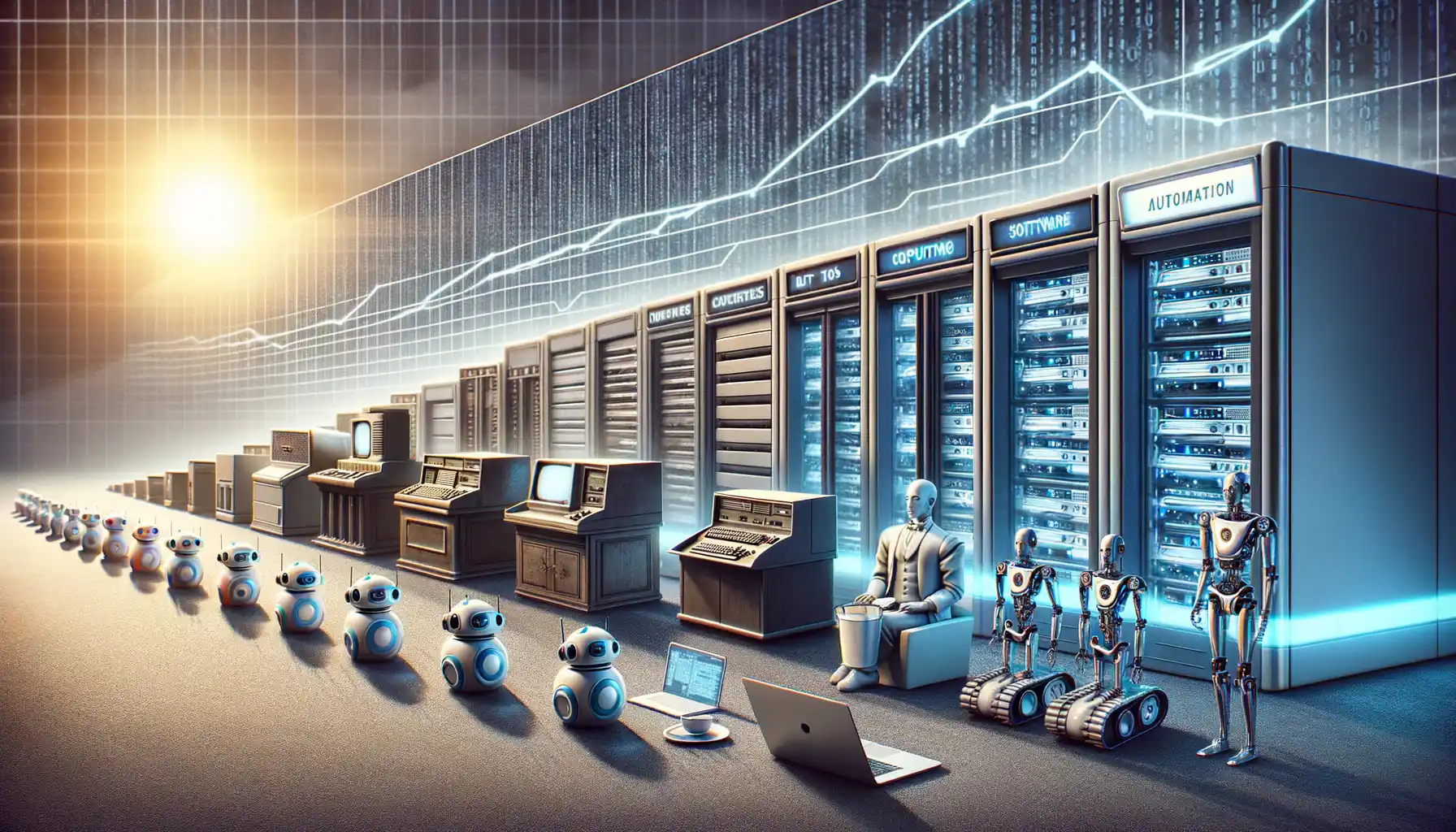Understanding the Basics of Robotic Process Automation
What Makes Robotic Process Automation Tick?
Imagine having a tireless assistant who never complains, doesn’t take coffee breaks, and executes repetitive tasks with laser precision. That’s essentially what Robotic Process Automation (RPA) brings to the table! But here’s the twist—these aren’t physical robots whirring around your office. Instead, RPA is powered by clever software “bots” that live inside your computer systems, working behind the scenes to handle mundane tasks with clockwork efficiency.
At its core, RPA mimics human actions like clicking through applications, filling out forms, or transferring data between systems. Ever felt bogged down copying and pasting invoices or manually updating spreadsheets? RPA thrives on these routine jobs, completing them faster—and without error.
- Rule-based functions: Think of tasks that follow a predictable, step-by-step process.
- User-friendly design: No coding genius required! Many RPA tools are designed for non-tech users, making automation accessible to everyone.
What’s particularly thrilling? These bots don’t just automate—they learn. With AI-driven enhancements, RPA systems can adapt over time, turning good assistants into game-changing partners for your business operations. Can you see why so many companies are buzzing about it?
The Historical Development of RPA in Business

RPA’s Rise: From Humble Beginnings to an Indispensable Ally
Imagine it’s the early 2000s. Businesses everywhere are drowning in repetitive tasks: inputting endless data, copying files, updating spreadsheets. Enter the first whispers of what would become Robotic Process Automation (RPA). Back then, it wasn’t glamorous—think clunky tools performing simple screen scraping and rule-based automation. But this was the spark that lit the flame.
Fast forward a few years, and *boom*: businesses began noticing that these humble automations could take on more. Thanks to advancements in AI and software development, RPA evolved into a true game-changer. By the 2010s, companies like UiPath and Blue Prism were pioneering platforms that didn’t just mimic human actions but did so with incredible speed and precision.
- The first use cases? Banking, where hours were saved by automating loan processing.
- Then came retail, healthcare, and beyond—boosting productivity in ways we never thought possible.
Today, RPA sits proudly at the crossroads of business efficiency and innovation, proving its worth across industries as a trusted digital partner. It’s not just about automating—it’s about transforming how we work.
Key Benefits of Implementing RPA Solutions

Streamline Your Day-to-Day Operations
Imagine handing off your most mind-numbing tasks to a tireless assistant who never complains, never makes mistakes, and works around the clock. That’s exactly what implementing Robotic Process Automation (RPA) feels like! Think about processes like invoice processing, data entry, or onboarding new employees—time-eaters that drain productivity. With RPA in place, these repetitive chores are handled swiftly and error-free.
Here’s where it gets even better: RPA doesn’t just save hours; it gives you back creative energy. Picture your team finally focusing on strategies, innovations, and customer experiences instead of untangling spreadsheets. It’s not just automation—it’s liberation!
- Accuracy boost: Machines don’t daydream—they deliver precision from start to finish.
- Faster turnaround: Tasks that once took days? Completed in minutes.
- Scalability at its finest: Need to process ten invoices or ten thousand? RPA scales effortlessly alongside your growth.
Empower People, Not Just Processes
Here’s the kicker: RPA doesn’t replace humans; it enhances them. By taking the robotic tasks off your plate, you empower your workforce to shine where it matters most. A customer support agent, for example, can spend more time delighting customers instead of hunting through systems for information. Or think of HR teams spending more time fostering company culture rather than drowning in forms.
The result? A workplace where stress levels dip, job satisfaction sky-rockets, and talents are put to their best use. Isn’t that the kind of transformation every business strives for?
Challenges and Limitations of RPA Adoption

Pitfalls That Could Trip Up Your RPA Journey
Adopting Robotic Process Automation might sound like a dream come true—a digital army of tireless, precise workers handling repetitive tasks while your team focuses on creativity and strategy. But let’s take a step back; no digital utopia comes without its hurdles.
For starters, integration can be a labyrinth. Businesses often underestimate how painstaking it is to weave RPA tools into existing systems. Think about it: legacy software that’s older than some of your employees now needs to “talk” seamlessly with cutting-edge bots. Not exactly a match made in heaven.
Then, there’s the elephant in the room: scaling. Sure, your pilot project may run like a well-oiled machine, but expanding an RPA system across multiple departments? That’s where things get dicey.
- Complexity: As workflows grow intricate, bots struggle with less predictable tasks.
- Human oversight: Despite the hype, bots still require constant monitoring to avoid costly errors.
And let’s not forget employee buy-in. Some team members embrace automation with open arms; others see it as an existential threat. Building trust here isn’t optional—it’s non-negotiable.
The Future Trends of RPA in Modern Enterprises

How RPA is Becoming Smarter and More Human-Centric
Imagine a future where your software bots not only automate repetitive tasks but anticipate your needs, adapt to unforeseen situations, and work alongside humans seamlessly. This isn’t science fiction—it’s the next chapter for Robotic Process Automation (RPA).
Emerging technologies like Artificial Intelligence (AI) and Machine Learning (ML) are stepping in as RPA’s brainpower. Picture this: an HR bot reviewing applications doesn’t just filter by keywords. Instead, it analyzes tone, diversity metrics, and historical company hiring trends to present the most aligned candidates. It’s automation that thinks beyond the surface.
And let’s talk about NLP—Natural Language Processing. Bots are learning to understand conversational language better than ever. Soon, communicating with a bot might feel like chatting with a knowledgeable coworker rather than clunky tech support.
- Predictive Automation: Bots that flag risks BEFORE they become issues? Check.
- Hyper-personalization: RPA tailoring workflows unique to every department’s style? Yes, please!
- Seamless collaboration: RPA integrating effortlessly into hybrid human-digital teams? Absolutely.
Sustainability and Scalability: RPA’s Core Mission
Modern enterprises aren’t just concerned with efficiency—they’re looking for lasting impact. Tomorrow’s RPA solutions will prioritize sustainable automation, minimizing energy usage while maximizing output. A finance team deploying RPA might see reduced operational costs and lower carbon footprints—a win-win.
Moreover, scalability is redefining how businesses think about growth. Forget static automation limited to one team; these systems are designed to expand dynamically, adjusting to organizational shifts in real-time. Think of it as upgrading from a single-lane road to a sprawling, AI-powered highway, ready to handle complex traffic without disruption.
The message is clear: the future of RPA is not just about doing things faster—it’s about doing them smarter, greener, and with a human touch. The question isn’t whether you’ll adopt these advancements, but when.












